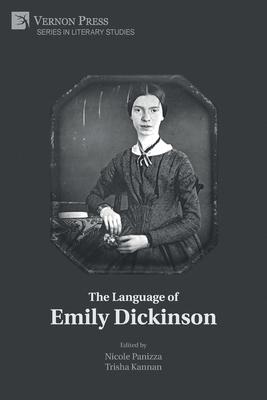The Language of Emily Dickinson provides valuable insight into the cryptic, complex, and unique language of America's premier poet. The essays make each subject of exploration accessible to general readers, providing sufficient background and contextual information to situate anyone interested in a better understanding of Dickinson's language. The collection also makes a substantial contribution to Dickinson studies with new scholarship in philology, musicality, and manuscript study. Cynthia L. Hallen, creator of the invaluable Emily Dickinson Lexicon, offers a detailed examination of Dickinson's words and phrases that are lexically alive and semantically vital. Nicole Panizza, an accomplished pianist, explores Dickinson's poetic relationship with music as bilingual practice. Holly L. Norton outlines the surprising connections between Dickinson's poetry and rap music, and Trisha Kannan contributes to recent discussions regarding Dickinson's fascicles, the manuscript "books" that contain just over 800 of Dickinson's 1,789 poems, by reading Fascicle 30 in relation to the work and life of John Keats.
This book will be of interest to scholars of Emily Dickinson and advanced readers of poetry--such as those in upper-level undergraduate English courses and graduate students in departments of English--as well as to general readers with an interest in Emily Dickinson.

The Language of Emily Dickinson
The Language of Emily Dickinson provides valuable insight into the cryptic, complex, and unique language of America's premier poet. The essays make each subject of exploration accessible to general readers, providing sufficient background and contextual information to situate anyone interested in a better understanding of Dickinson's language. The collection also makes a substantial contribution to Dickinson studies with new scholarship in philology, musicality, and manuscript study. Cynthia L. Hallen, creator of the invaluable Emily Dickinson Lexicon, offers a detailed examination of Dickinson's words and phrases that are lexically alive and semantically vital. Nicole Panizza, an accomplished pianist, explores Dickinson's poetic relationship with music as bilingual practice. Holly L. Norton outlines the surprising connections between Dickinson's poetry and rap music, and Trisha Kannan contributes to recent discussions regarding Dickinson's fascicles, the manuscript "books" that contain just over 800 of Dickinson's 1,789 poems, by reading Fascicle 30 in relation to the work and life of John Keats.
This book will be of interest to scholars of Emily Dickinson and advanced readers of poetry--such as those in upper-level undergraduate English courses and graduate students in departments of English--as well as to general readers with an interest in Emily Dickinson.